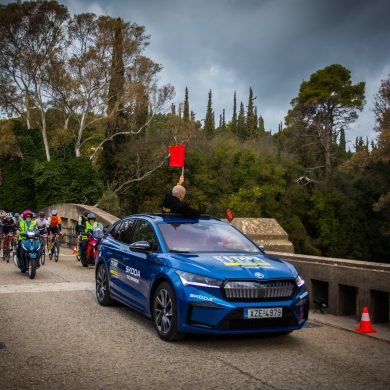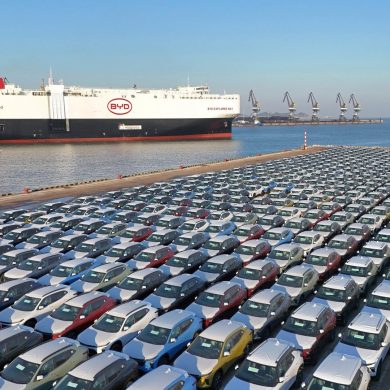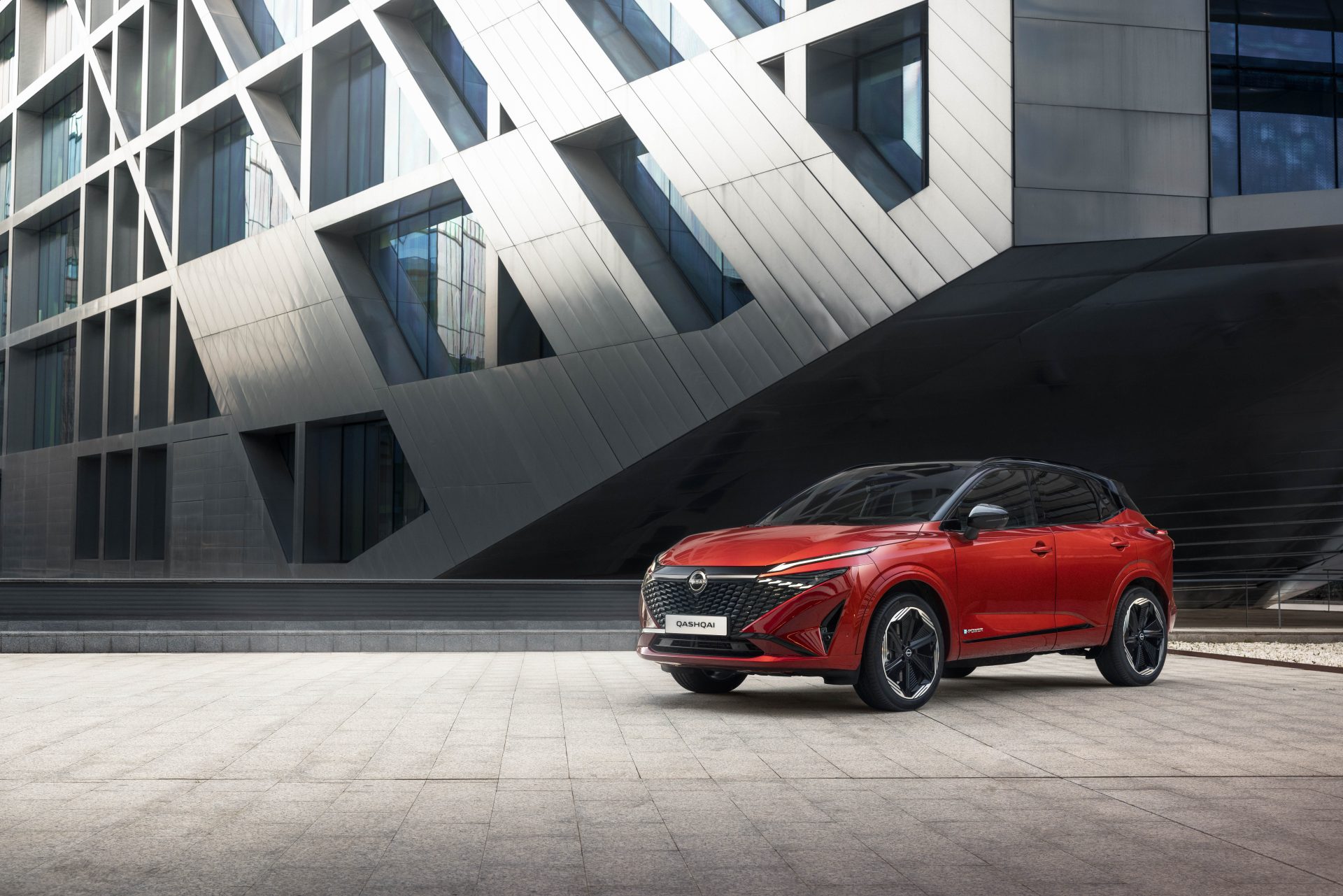
Nothing stays the same for long in the highly competitive crossover segment that Nissan created with the first Qashqai. In the three years or so since its launch, the third-generation Qashqai has sold more than 350,000 units in Europe and continues to set the standard for the crossover segment. Aiming to maintain its position as the pioneer and benchmark in its segment, it now comes back to rock the boat with a comprehensive aesthetic overhaul as well as major technological upgrades.
From bold changes to the exterior design, to major upgrades to the multimedia system and connected services, the philosophy behind the changes to the Qashqai is to retain the essence of what customers love about the Qashqai, reinforce its strengths and add even smarter and more usable technology.
New exterior design - a bold, distinctive and sporty look
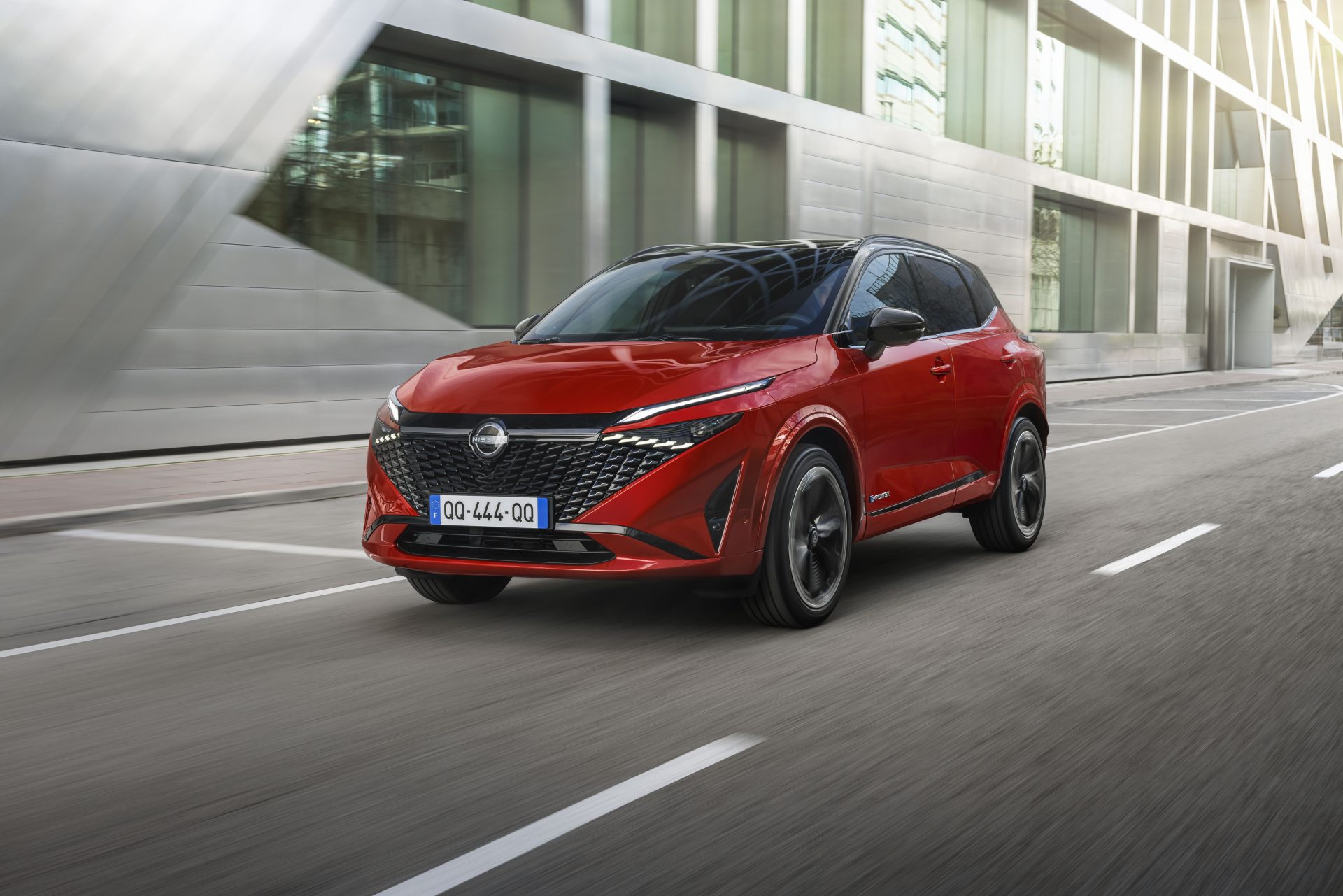
The new Qashqai exudes a sharp and modern dynamism thanks to its updated design. The Qashqai's front grille has been completely redesigned, creating an even more dynamic first impression. Inspired by the designs of ancient Japanese armour, it consists of dozens of glossy, three-dimensional elements in black that appear to float in the space between the bonnet lip and the lower frame. On the sides of the centre section, these elements form a triangular shape under the new headlamps and are finished with a "satin chrome" stamp on the top version.
The sides of the bumper are in body colour and a black strip in a glossy finish runs underneath the number plate frame at the lower corners of the bumper. Below the cooling vent, there is a thin line in body colour which gives a sense of ruggedness to the front end.
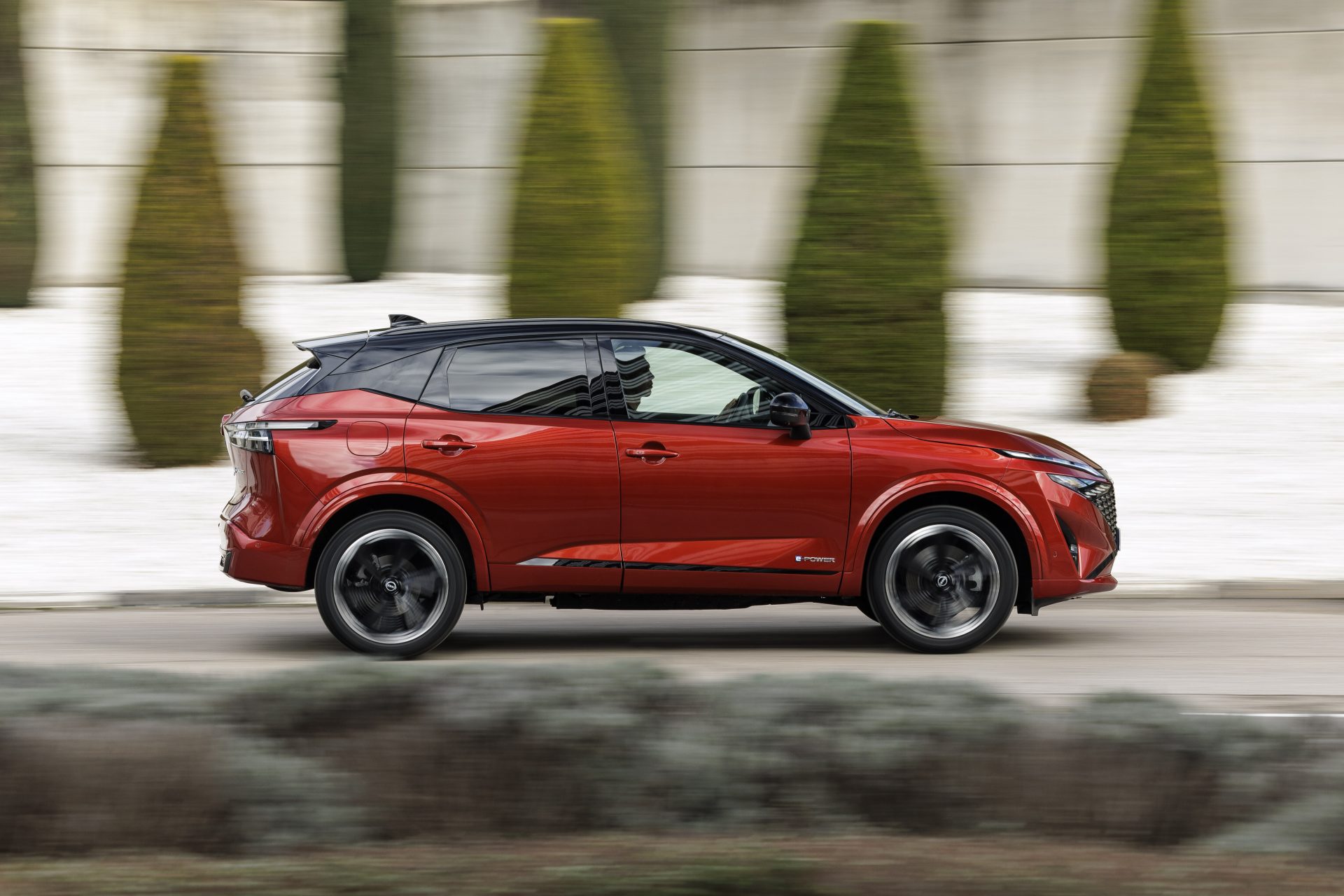
The new headlamps make an impact with their presence, with an even more pronounced appearance. An adaptable large step unit is complemented by a smaller unit for wider light distribution, which offers increased visibility in low-light and fog conditions. Under the main body, the daytime running lights consist of five small elements that are the same shape as the 'commas' of the main front grille. The daytime running lights surround the main body of the headlights, joined by the thin light above the headlight that is similar to the unit on the previous version of the Qashqai, but now has an illuminated "Nissan" on the edge. The top element of the daytime running lights also becomes a turn signal, which for the first time is illuminated sequentially (depending on the version).
At the rear, the shape of the luminaires remains unchanged, but the composition of the lights within the unit has been redesigned. The red lighting elements now consist of four individual elements that follow the shape of the front grille 'commas'. They appear to float in the body housing and now have a distinctive shade of red known as "super red", giving a sense of increased precision. Their outer casing is now transparent, for better viewing of lighting elements.
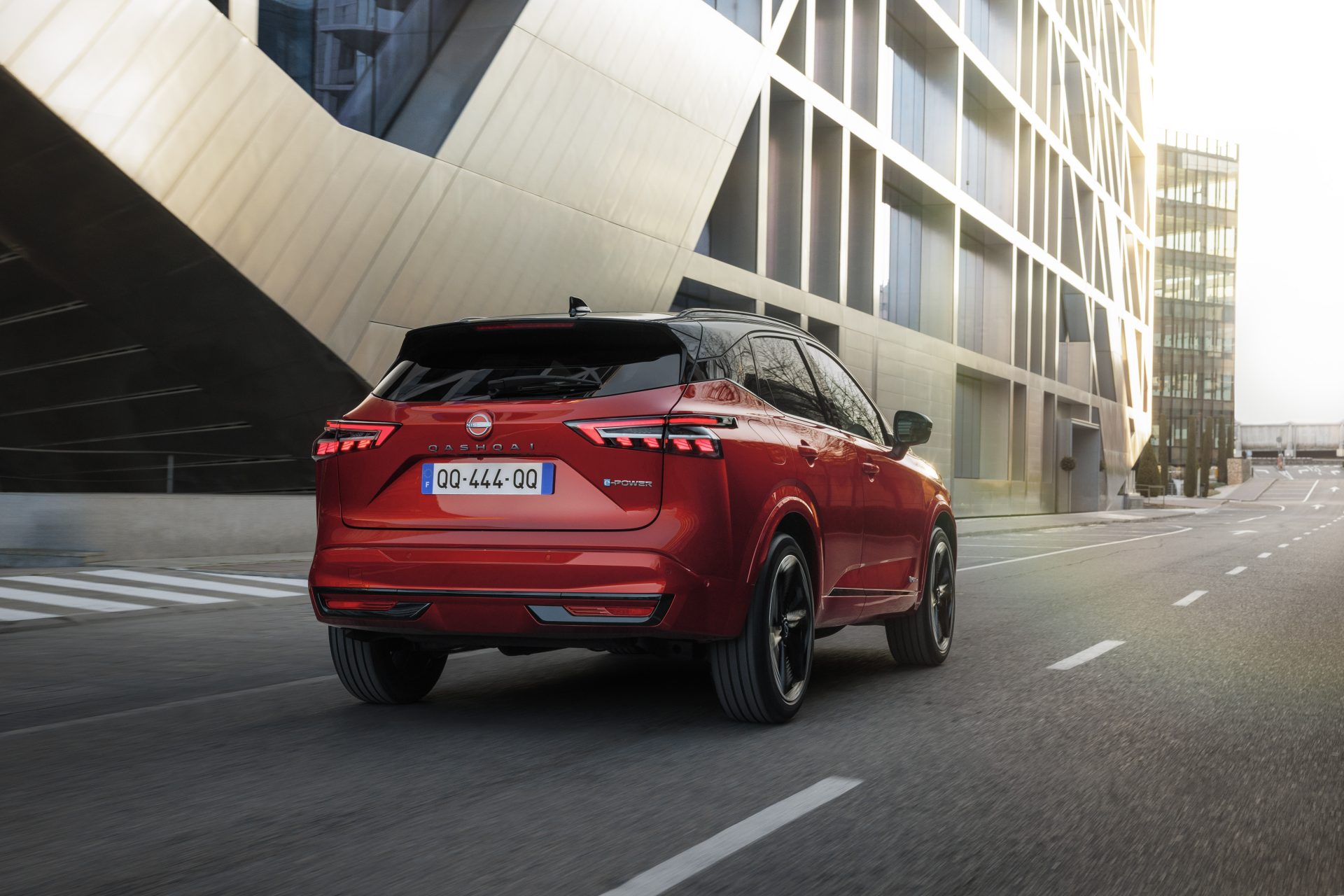
The bumper has been reshaped and features a colour - either gloss black on the higher versions, or body colour on the new N-Design version.
Similarly, on the side, the new Qashqai in higher trims features a new gloss black finish on the bodywork under the doors and wheel arches.
New 18" alloy wheels are now standard on the mid-range Qashqai. For the higher versions, new alloy wheels in 19″ and 20″ are available. This wheel range is one of the widest in the segment, adding an extra dimension to the Qashqai's impressive design refresh.
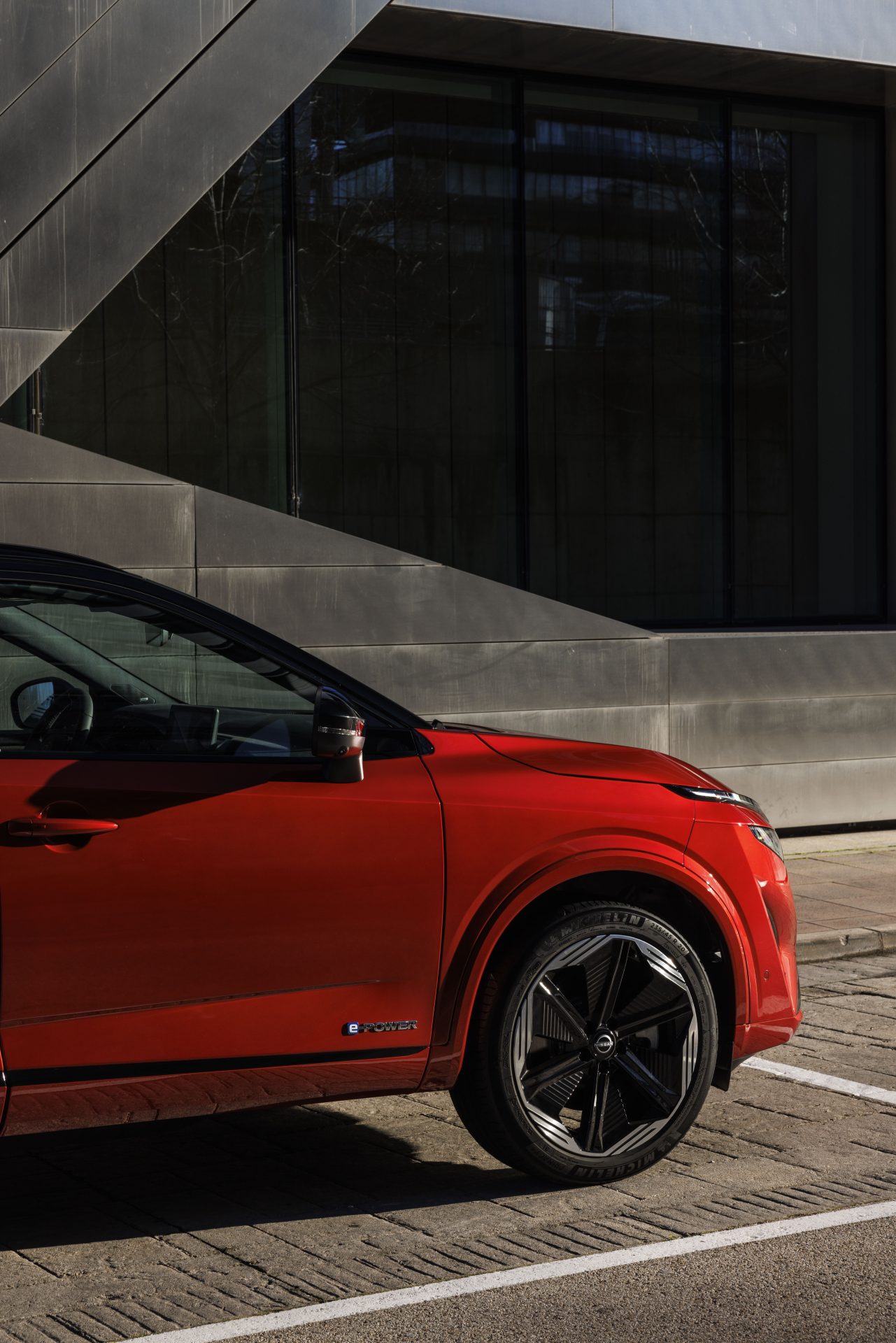
Three new colours have been added to the Qashqai palette. Pearl White is new and features a cleaner shade which gives a new shine in certain lighting conditions. Pearl Black replaces the previous black option and has a richer black hue which has the effect of accentuating the visual geometry of the Qashqai.
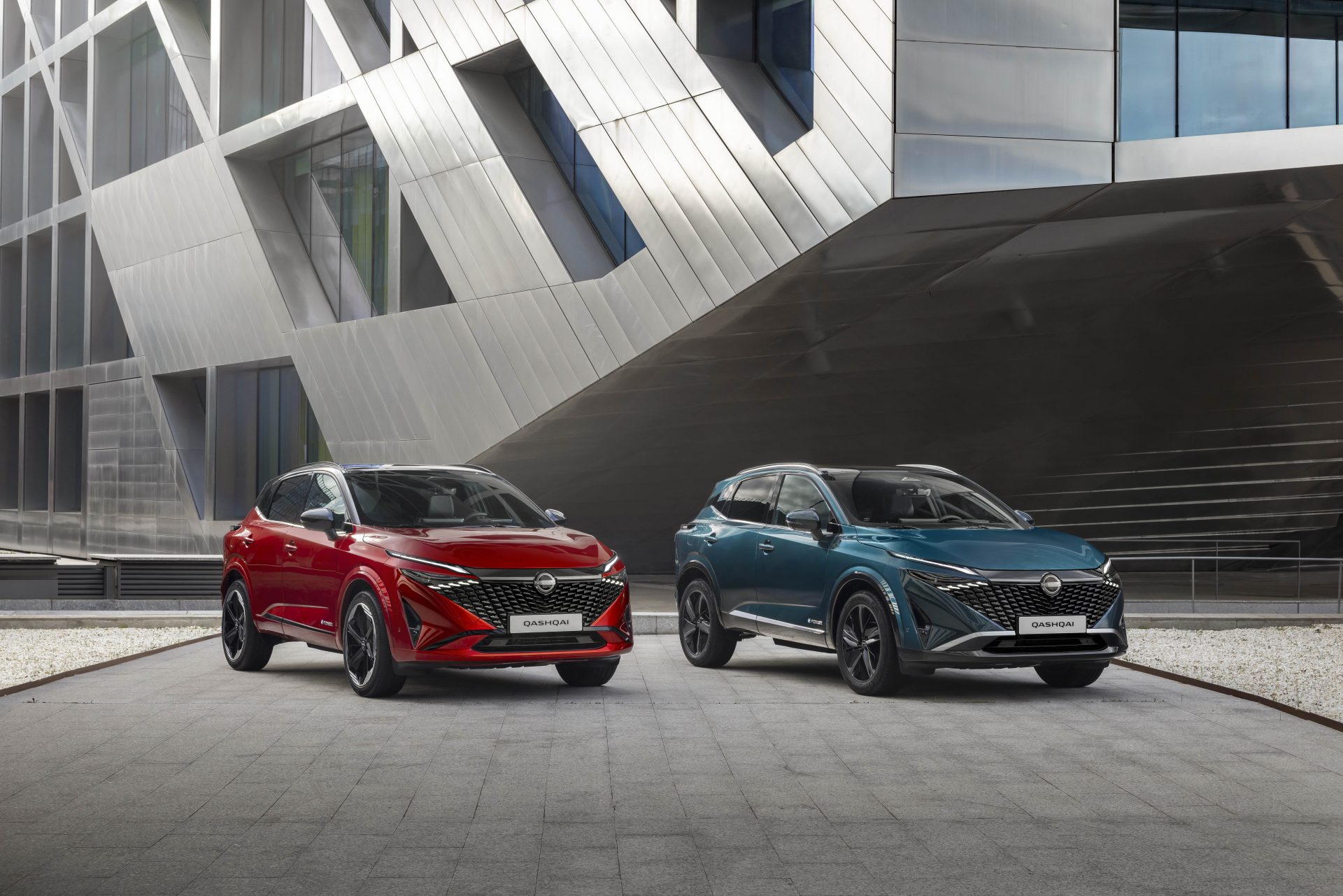
Deep Ocean is a striking new colour. It lies somewhere between dark blue and metallic teal, depending on the prevailing light conditions. It's bound to generate debates, "Is this Qashqai blue or is it green?"
Five of the Qashqai colours - Pearl White, Deep Ocean, Fuji Red, Magnetic Blue and Ceramic Grey - are available in two-tone, with a black roof for a more distinctive look.
New N-Design version
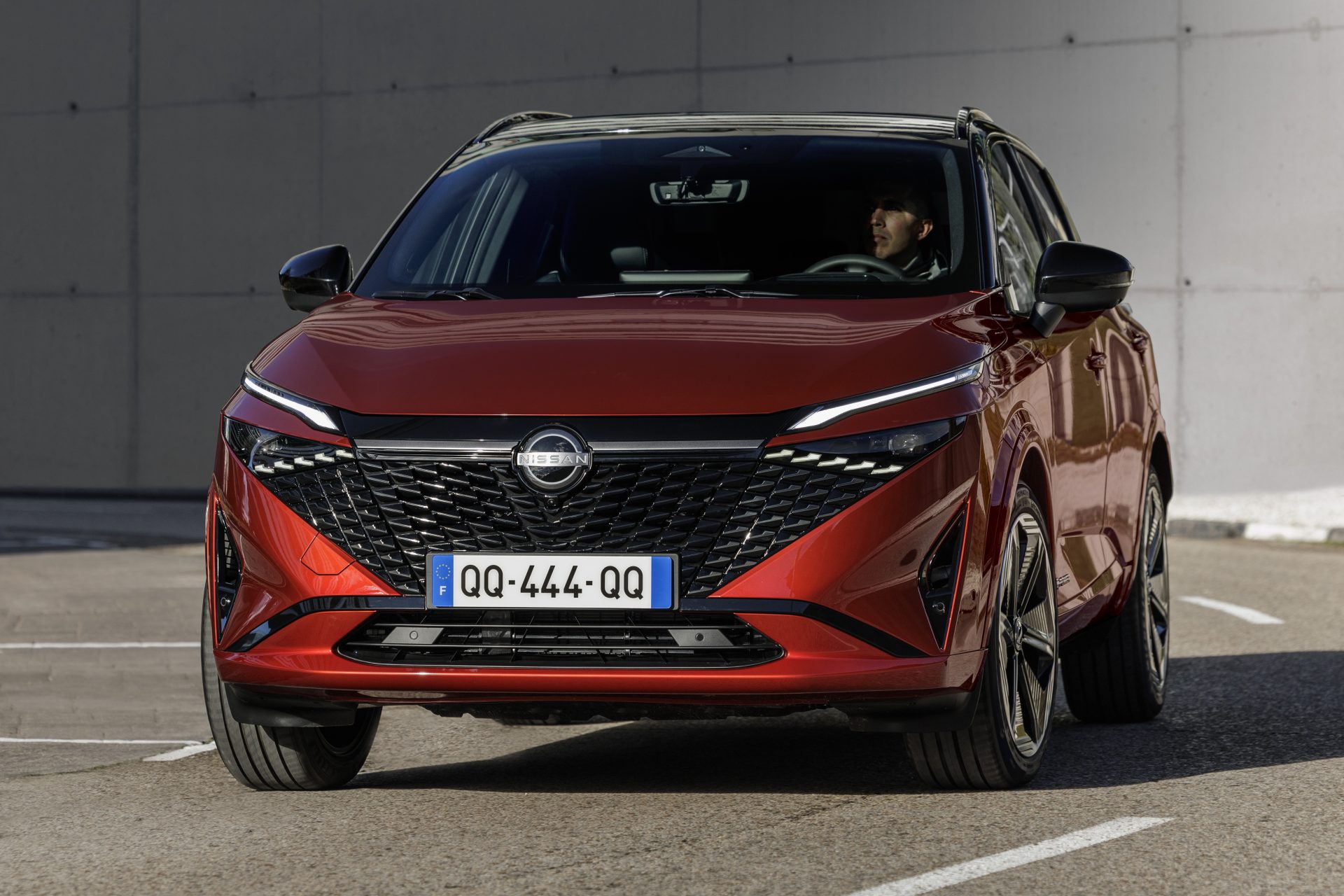
A new addition to the Qashqai range is the N-Design version. Designed for Qashqai customers who would like their version to be particularly bold, it features unique aesthetic touches. On the exterior, the lower bodywork below the doors and wheel arches is in body colour. The N-Design version is further equipped with unique, all-new 20" alloy wheels that make its presence on the road even more impressive.
Upgraded interior
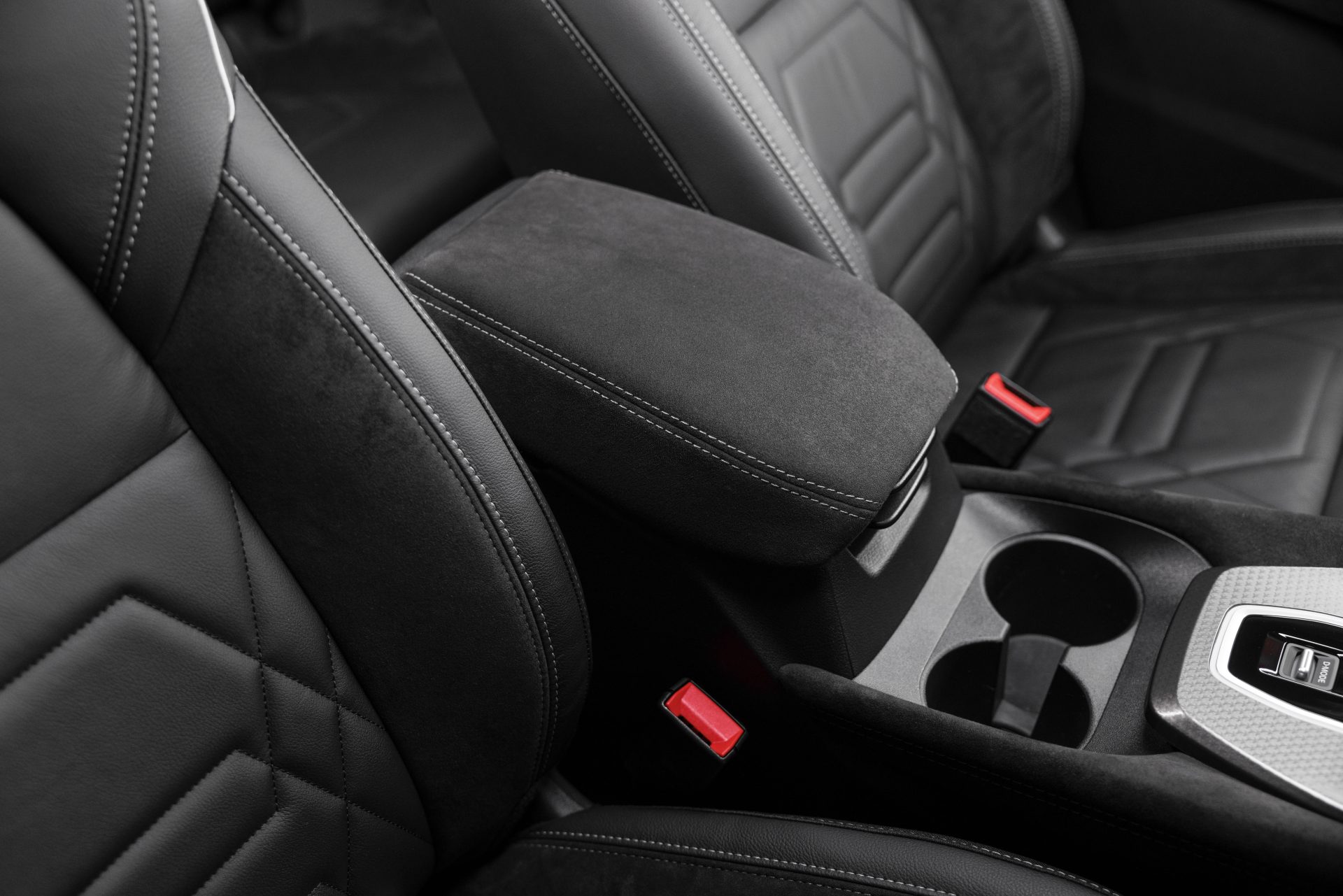
Once the new Qashqai's refreshed exterior has piqued the interest of potential Qashqai customers, their interest will be piqued even more by the refreshed interior.
For the higher versions, Alcantara is used on the dashboard, door inserts, door armrests and the central console storage area cover, which enhances the overall atmosphere of the car.
New materials with a soft design adorn the centre console around the gear selector and the decorative insert between the upper dashboard and glovebox, underlining the attention to detail that characterises Japanese craftsmanship.
Upgraded seat trims are now available for the three higher versions of the Qashqai for an even more premium feel. Most notable is the black partially quilted premium leather on the top-spec Qashqai. In the next higher version, there is a quilted synthetic leather, complemented by a correspondingly quilted leather on the seat base and backrests.
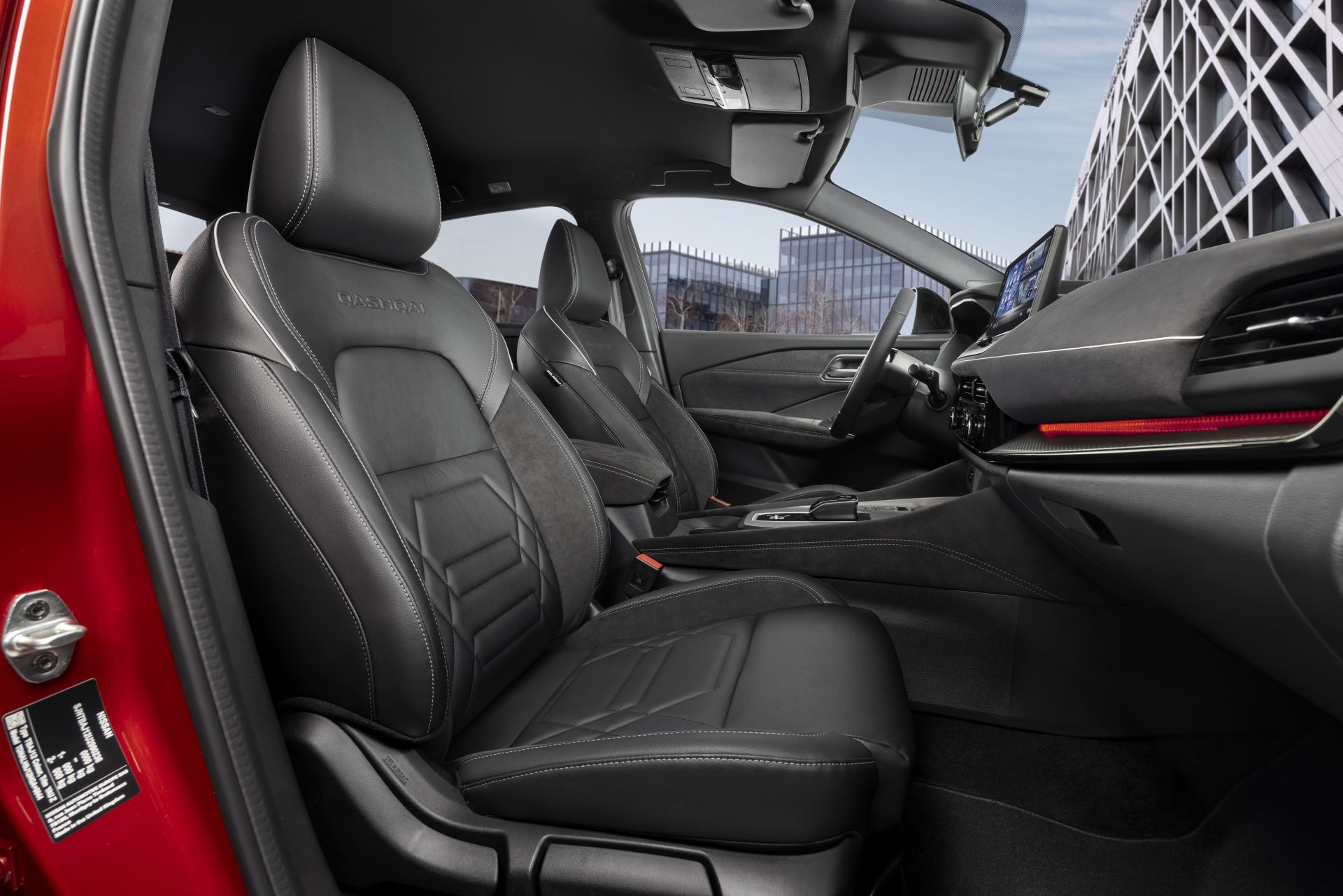
The seats in the N-Design version feature black leather with Alcantara inserts. The embossed "Qashqai" wordmark adorns the section directly below the head restraint.
A new dimension to the upgraded interior feel of the new Qashqai is the addition of ambient lighting in N-Connecta, N-Design and above. Advanced LEDs, which are discreetly positioned, allow the driver (or passenger) to personalise the interior lighting to suit their mood. In the two top versions, the LEDs are also located at the rear, so that all passengers can enjoy the special lighting. Lighting settings can be controlled via the central infotainment screen.
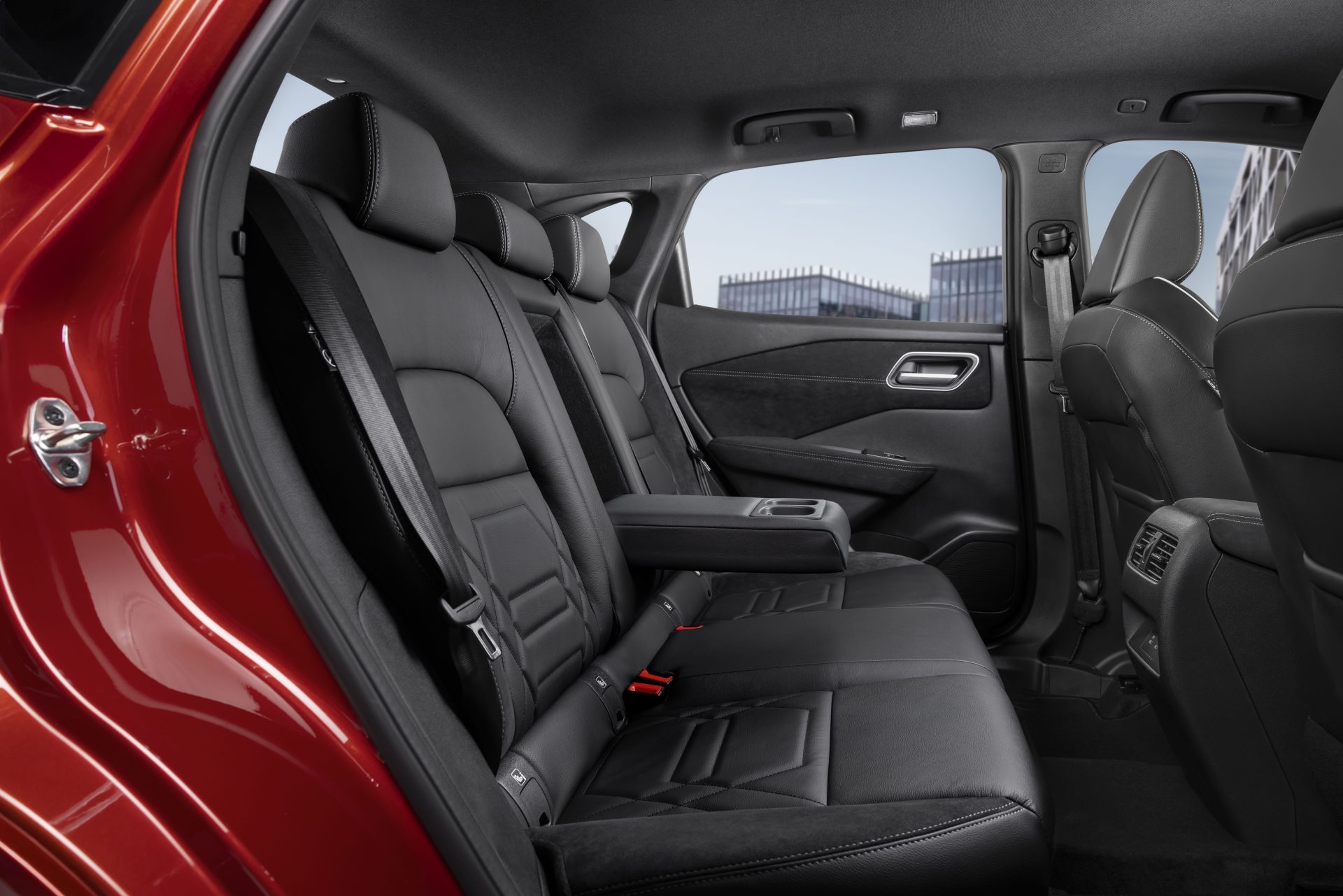
"The new face of the Qashqai has a more advanced look, with more depth and striking details. We were inspired by traditional Japanese armour that combines elegance with ruggedness. We worked hard with our colleagues on the front and rear lighting, giving it an upgraded and clean impression, integrating it harmoniously into the bodywork. Inside, new materials and atmospheric lighting further enhance the car experience. Overall, we are confident that crossover buyers will love the results," said Matthew Weaver, Vice President of Nissan Design Europe.
Upgraded technology
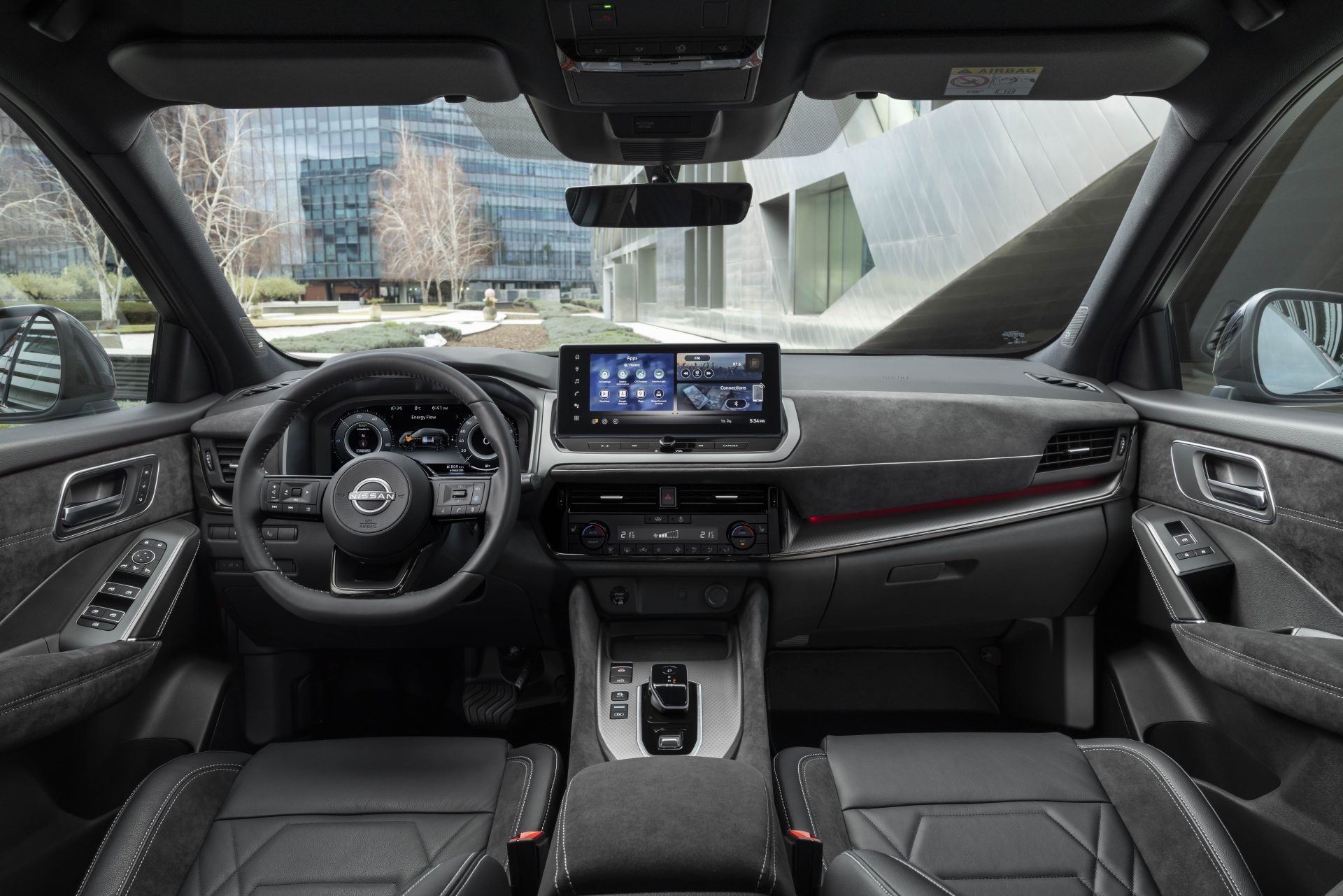
The pace of progress in the automotive world is now closely linked to advances in digital technology and computing power. And in this area, the new Qashqai has harnessed this progress to make the everyday driving experience even more intuitive and comfortable.
One of Qashqai's most frequently used technological elements has been significantly upgraded. The Around View Monitor (AVM) is a Nissan technology that dates back to 2007.
When reverse is selected, the view from four exterior cameras combines to give a panoramic view of the vehicle in plan view, which helps to make parking manoeuvres with maximum confidence. The newly upgraded AVM technology uses the four cameras to provide a new ultra-clear view in all exterior lighting conditions.
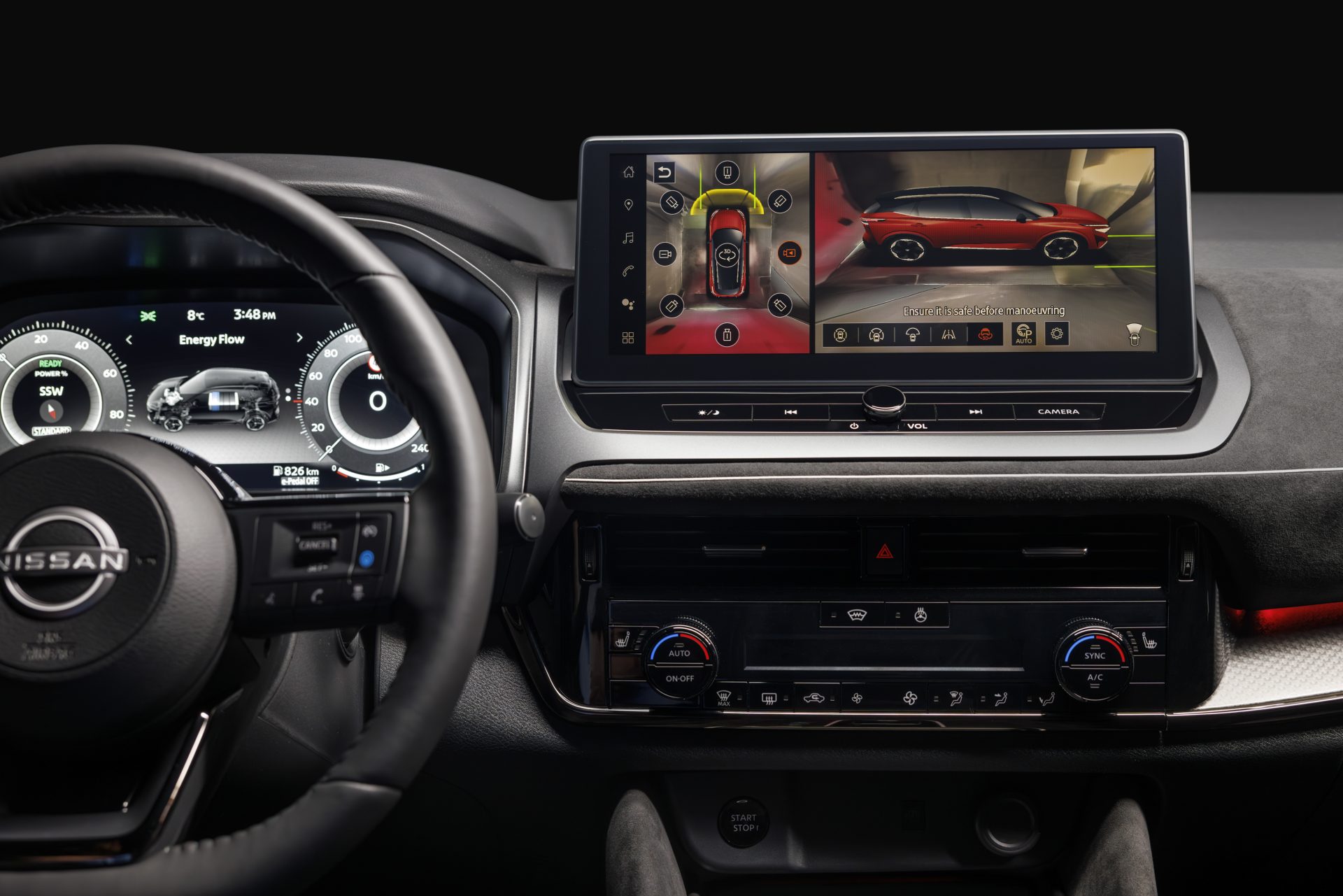
The upgraded AVM system now features a 3D mode that allows the driver to not only view the car from above, but also to select one of eight different exterior camera viewpoints to visualise the car from the front, rear, sides or corners to potentially detect any unseen external hazards. It works alongside Nissan's moving object detection system, which emits an alert when it detects a moving object near the Qashqai.
In addition, a feature known as "invisible bonnet view" allows the driver to see the position of the front wheels as if looking at them from behind, which allows the driver to manoeuvre precisely in tight spaces such as high-rise car parks where there are concrete kerbs that could damage the wheels and rims. This projection uses machine learning to create the image based on what the front camera can see, with the wheels composited into the image to give a sense of perspective.
Another new smart feature of AVM is the "Parking Spot Location Memory" which allows the driver to store frequently visited parking locations so that the car can automatically recognise the location using GPS. When this happens, the car will remember the exact location to allow perfect parking every time, which is particularly useful when space is tight.
In addition, AVM technology can help drivers to make a safer entry into a road where visibility is limited. It uses a wide-angle front camera to show the view from the front of the hood, which is projected onto the center screen. As with the Parking Position Memory feature, locations with limited visibility can be stored in AVM's GPS memory so that the feature is automatically activated near the intersection.
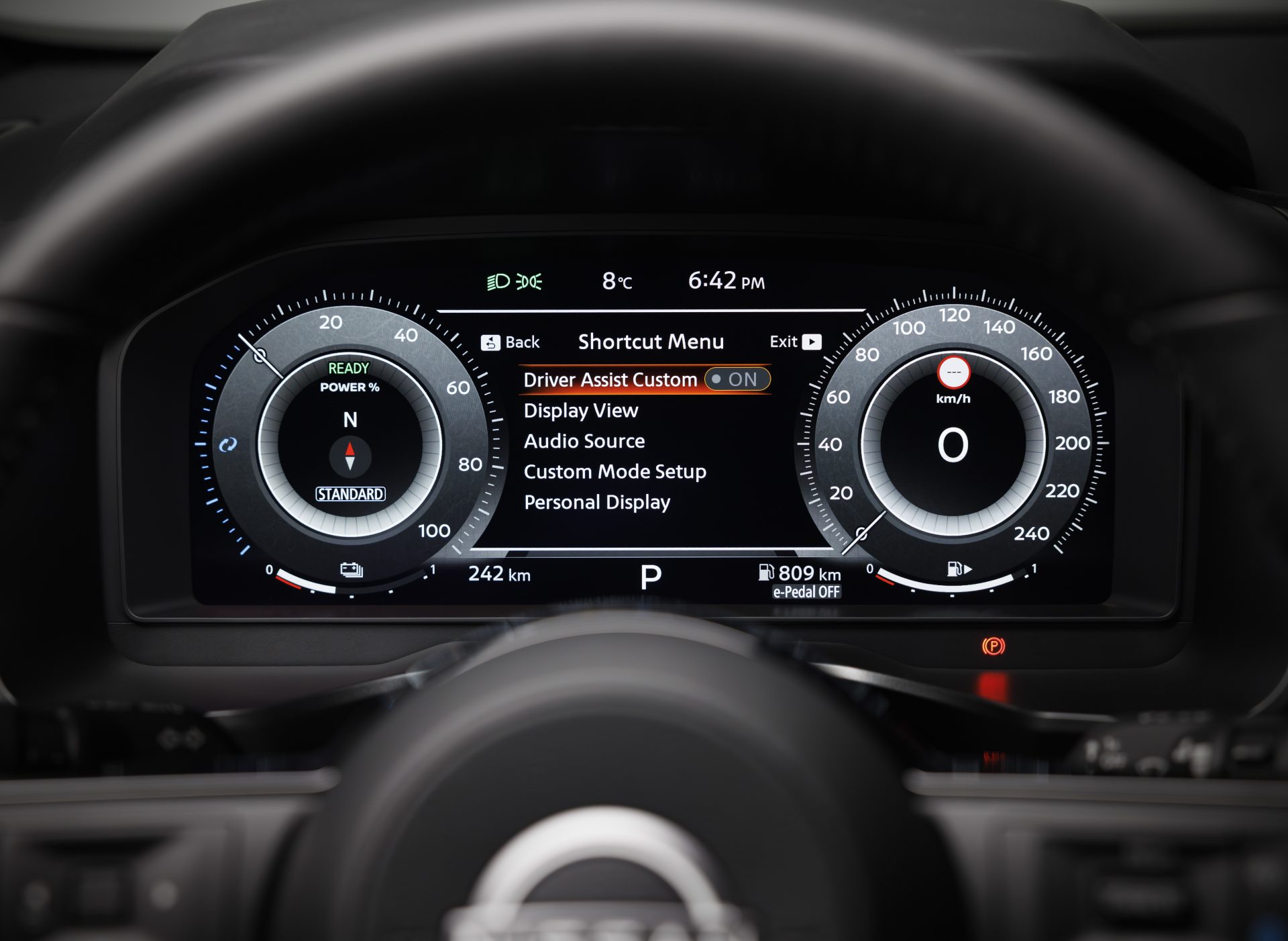
Also, design changes have been made to the elements displayed on the TFT screen behind the steering wheel. The colouring of the dials shown on the display changes to red in Sport mode, green in Eco mode or light grey in standard mode - in both 'normal' or 'enhanced' viewing mode.
There is now a "minimal" option that reduces potential driver distraction by displaying only the selected speed, driving mode and speed. For Qashqai equipped with e-POWER, the power flow indicator is now available in 'normal' display mode.
"The new Qashqai has benefited from a comprehensive range of technological upgrades. From the next generation Around View Monitor, which is useful to our customers every day, to the introduction of the Google suite, which makes the Qashqai seamlessly part of our customers' digital lives. At the heart of Nissan's commitment to innovation is an intuitive user experience and true comfort. The new Qashqai epitomises these priorities," said David Moss, Senior Vice President, Research and Development Region (Africa, Middle East, India, Europe and Oceania).
Upgraded and advanced driver assistance systems
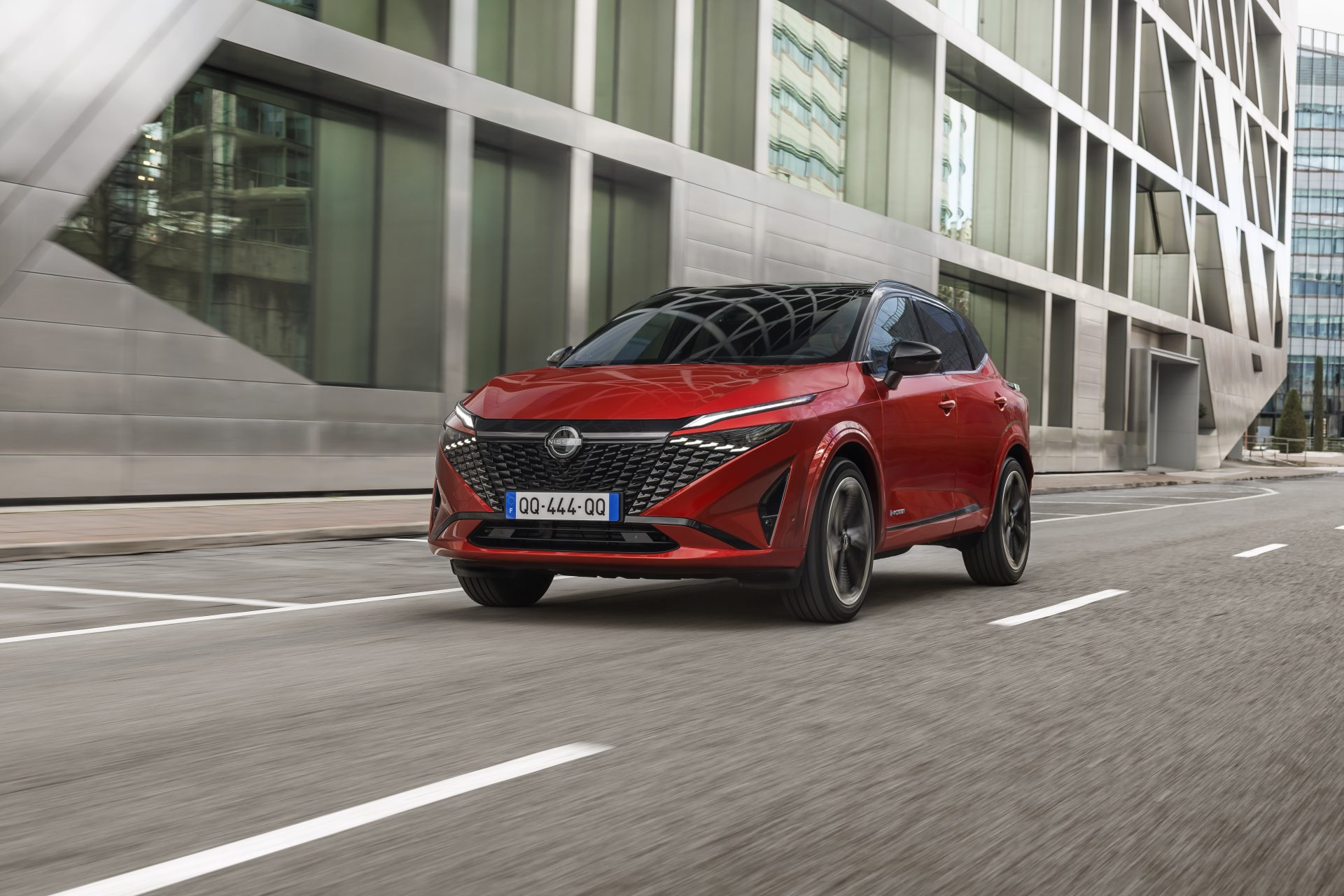
The suite of driver assistance systems has been significantly upgraded to provide improved alertness and intervention for maximum peace of mind.
Firstly, the Autonomous Emergency Braking functions have been recalibrated to improve hazard detection and react more quickly in the event of a potential collision. This applies to the Front Emergency Brake, Pedestrian Front Emergency Brake, Cyclist Front Emergency Brake, and Intelligent Emergency Brake functions.
In case of emergency braking, the corresponding signal will be activated. This will cause the rear brake lights to flash to draw the attention of the vehicles behind. The Emergency Stop Signal is activated when sudden brake pressure is applied at speeds above 60 km/h.
The Emergency Lane Keep System is now automatically activated when the Qashqai is started. It activates both the Lane Departure Warning and Lane Departure Prevention systems at speeds above 60 km/h. The system generates a tactile warning by means of a steering wheel vibration when it detects that the car is too close to either the centre lines or the side of the road.
The Intelligent Speed Assistance system, which helps the driver to adjust the vehicle's speed to the current limit using both the camera for reading road signs and GPS data, has been upgraded. A flashing icon draws the driver's attention when travelling above the speed limit and now sounds a warning if they do not reduce their speed.
New for the upgraded Qashqai is the quick and simple Driver Assist Custom Mode, which allows drivers to quickly adjust the precise level of intervention from the various assistive technologies to suit their preferences. This can be carried out through a two-step process using the shortcut menu button on the left-hand steering wheel beam and the 'Ok' button.
Google built–in
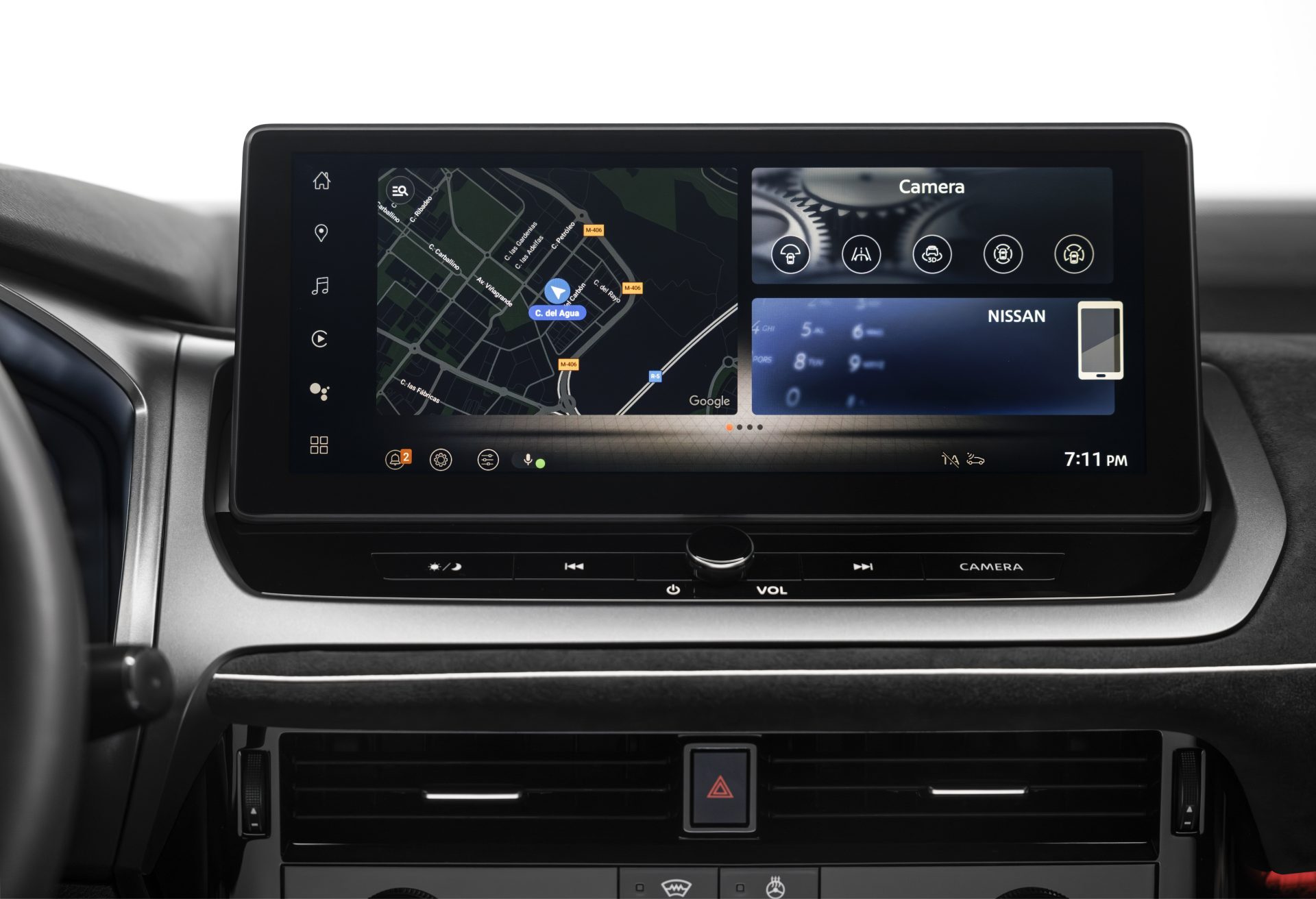
The new Qashqai is the first vehicle in Nissan's European range to integrate the Google suite as part of the Nissan Connect infotainment system, which provides a seamless interaction between a customer's digital life and their vehicle.
Qashqai comes standard with Google Maps and, after logging in with a personal Google account, drivers can access their favourite locations and points of interest. This reduces reliance on mobile phones and the mobile network. Over the air updates ensure that map information is always up to date.
Google Assistant allows the driver to use their voice alone for relevant services on the move. For example, drivers can say "Hey Google" to check the ventilation system and heated seats or to navigate precisely to their next destination. In addition, drivers can make phone calls and listen to audio directions without taking their eyes off the road.
Drivers also gain access to an ecosystem of apps available for download on Google Play. They can easily listen to their favorite music, podcasts, audiobooks and more, right from their vehicle.
The Nissan Connected Services update monitors the Qashqai on behalf of the driver. It can remind customers if they have forgotten to lock the car or close the windows if they are left open a minute after the engine is turned off. Customers can close the windows and lock the car from the relevant app. Still the app will also alert them if the car is broken into or towed. In case of suspected theft, the car can be immobilized and the police can be informed about the incident - even in foreign countries.
Qashqai customers with a data plan subscription can also use Amazon's Alexa smart home system. Customers can talk to Amazon Alexa on their Qashqai. With Alexa, they can request to play music, listen to the news, check the weather, control smart home appliances and more.
"The addition of Google's suite of services to the Qashqai reflects Nissan's spirit of innovation. The integration of this suite of digital technology allows our customers to have the convenience they enjoy from their smartphones built into their cars," said Guillaume Pelletreau, Vice President Electrification & Connectivity and new Revenues and Marketing & Sales Transformations, Nissan AMIEO (Africa, Middle East, India, Europe and Oceania).
e-POWER: a unique and innovative powertrain
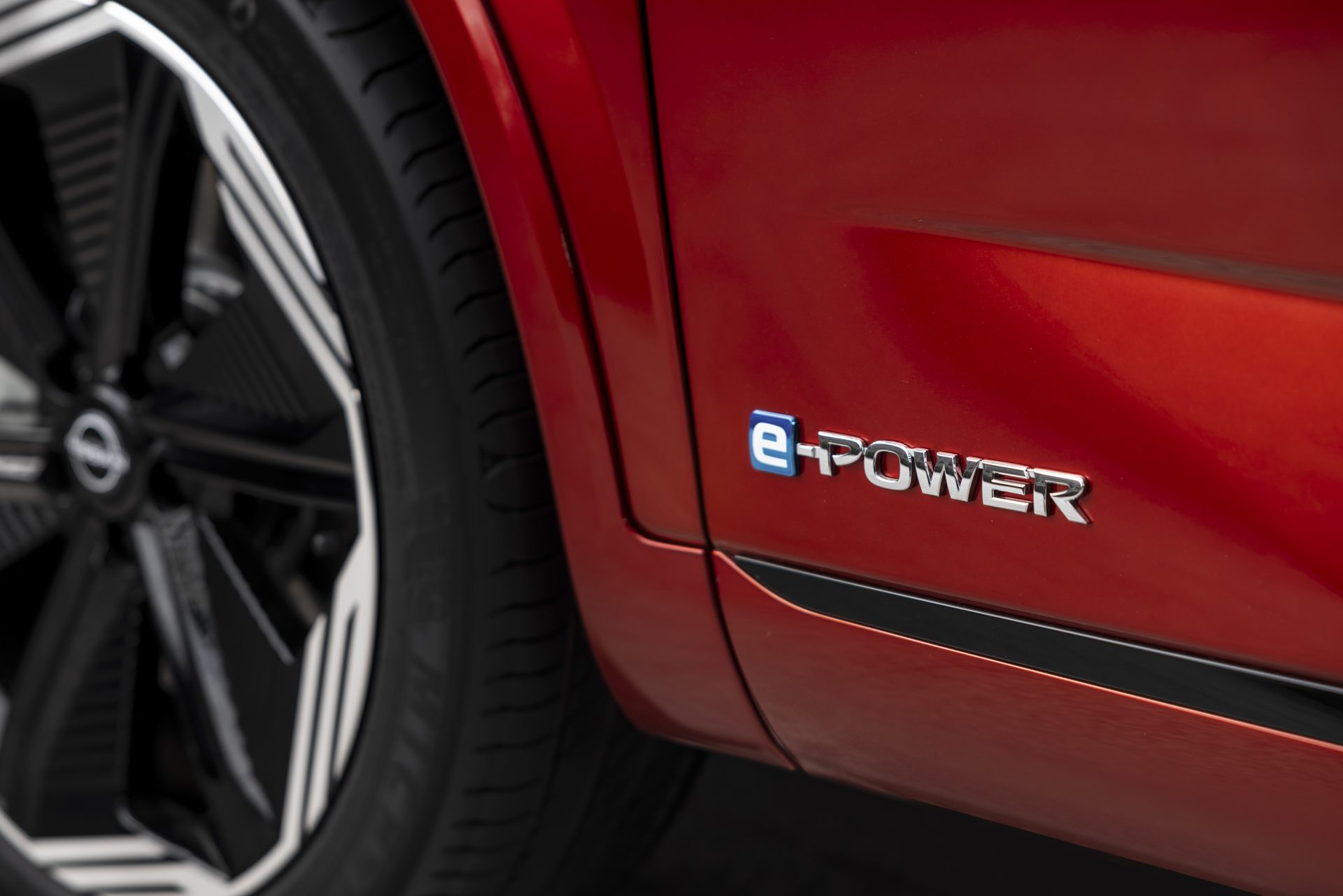
In keeping with the pioneering spirit that gave birth to the original Qashqai and which created the crossover segment, e-POWER is the only electric powertrain that has proved so popular with customers since its launch in 2022.
In the automotive world, the simplest ideas are often the best. And e-POWER perfectly reflects this principle. The petrol engine generates the electricity used to drive the wheels. This is a much simpler solution than the numerous traditional hybrids available today.
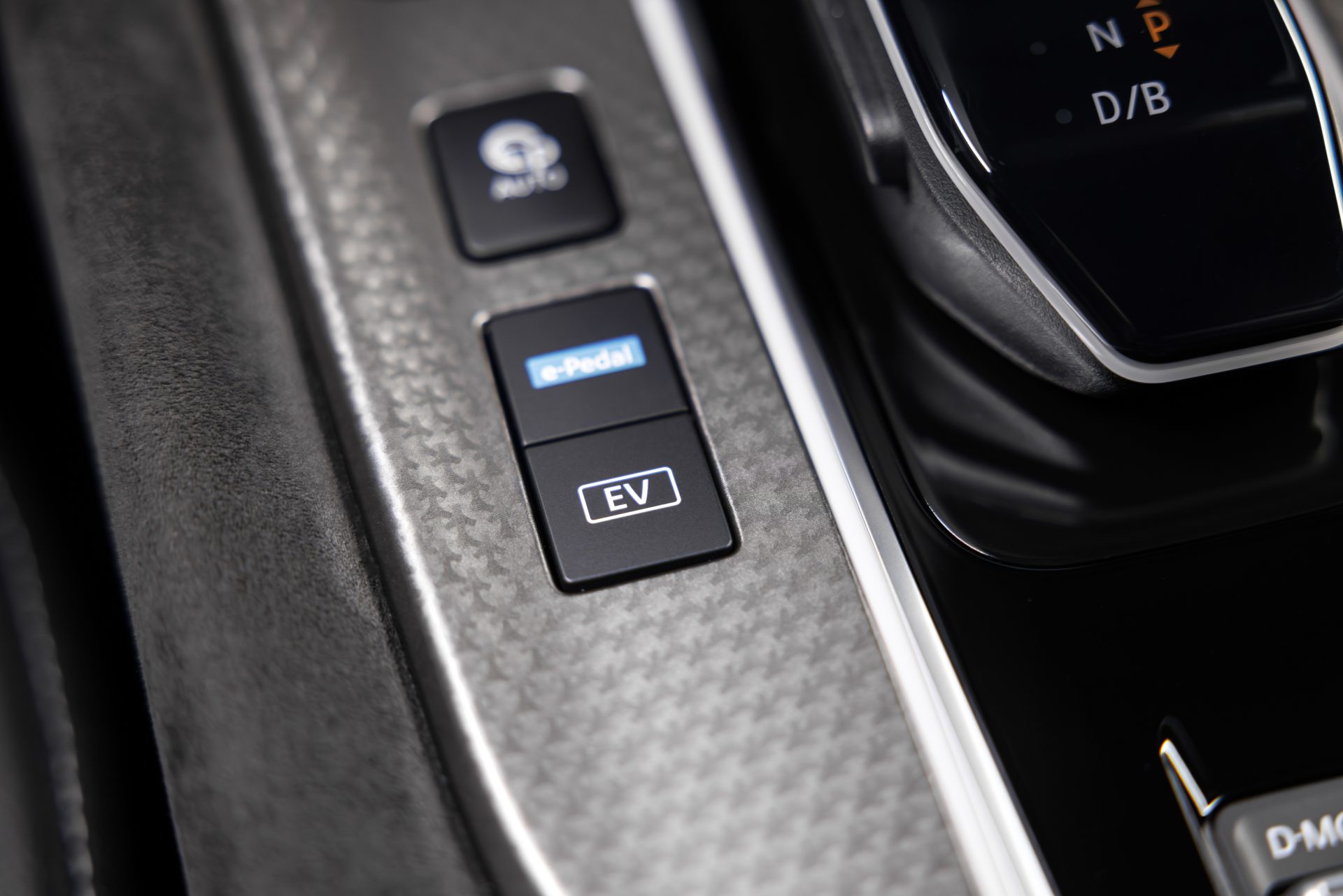
The result of this simplicity is a driving experience that combines responsiveness and refinement with efficiency - without compromising driving pleasure. Thanks to e-POWER, customers no longer have to accept a mediocre driving experience, as is the case with traditional hybrids.
A key feature of e-POWER's unique and innovative drivetrain is that there is no gearbox. The wheels are always driven directly by the electric motor. This means direct, high torque and linear response. The result is an EV driving experience without having to think about charging - an ideal option for customers who are not yet ready to make the transition to the 100% EV.
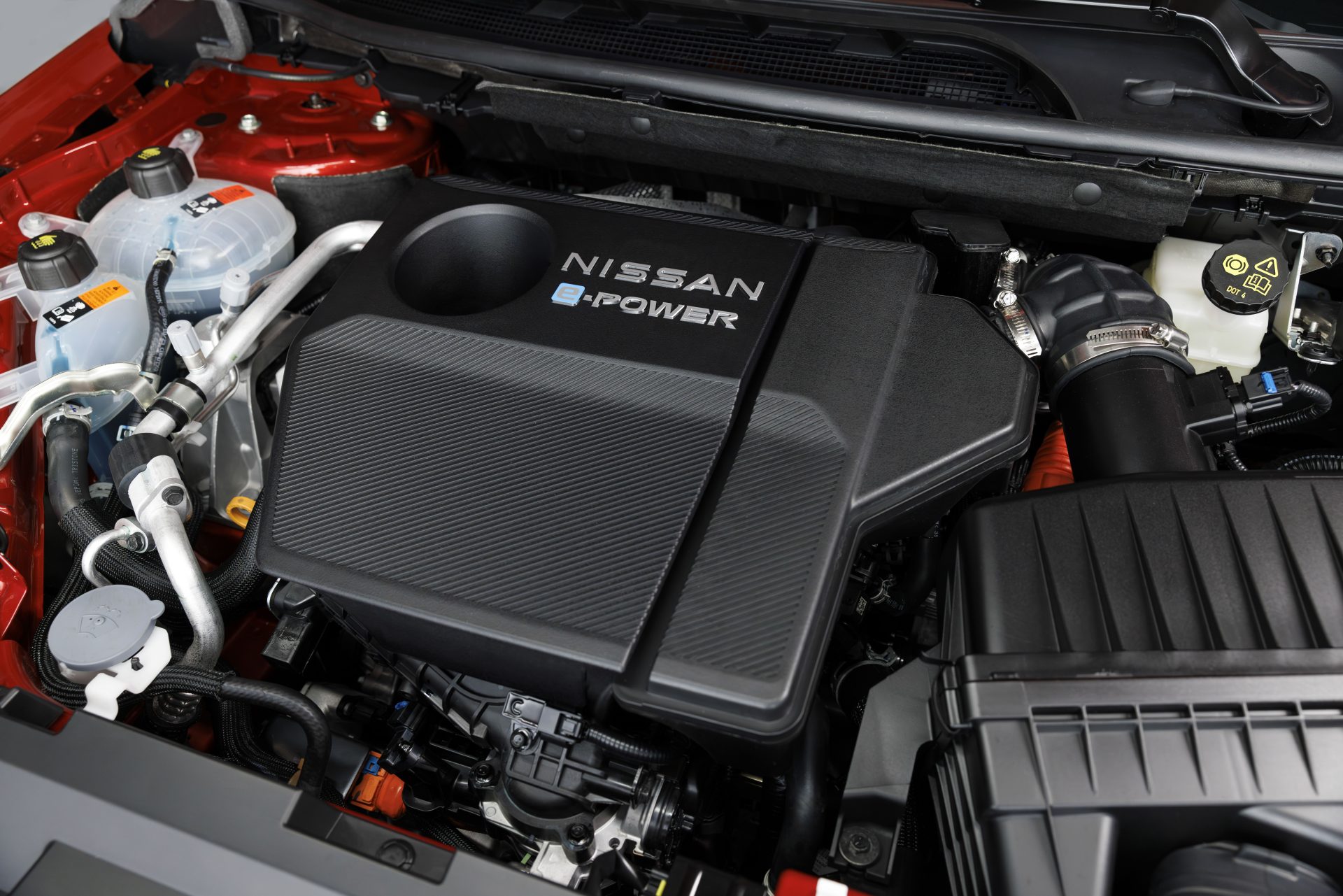
The unique role of the advanced turbocharged 3-cylinder engine - with variable compression ratio technology - is to generate electricity, which is sent via the inverter to either the 140 kW electric motor or the 1.8 kwh battery (or both, depending on the driving needs). The motor runs almost silently to provide the necessary charge to the battery and electric motor and is set to provide electricity according to the speed of the vehicle.
Like an all-electric vehicle, the e-POWER system can harness energy during braking and send electricity back to the battery. Drivers can also select mode B on the gear selector for higher levels of regenerative braking. Still, Nissan's e-Pedal Step feature allows drivers to drive using only the accelerator while significantly controlling braking by releasing the accelerator pedal. After a few minutes, driving with e-Pedal Step activated becomes very simple, especially in urban environments. (Braking may still be required in certain unforeseen circumstances - e-Pedal Step will only brake the vehicle until it reaches a "creep" speed, like a traditional automatic transmission. For complete immobilization, the brake will be needed).
Since the launch of both the Qashqai and X-Trail in September 2022, Nissan has sold over 100,000 e-POWER-equipped vehicles in Europe - with customers loving this electric sensation.
"The range of upgrades made to the Qashqai is designed to increase its impressive appeal. Across the range, there's added comfort, practicality and top-notch digital integration thanks to new Google features. The Qashqai has created a new car category thanks to its unique combination of attractive design, convenience and user-friendly technology. These upgrades maintain Nissan's position as the creator and innovator of the crossover category," said Arnaud Charpentier, Vice President, Product Strategy, Nissan AMIEO (Africa, Middle East, India, Europe and Oceania).
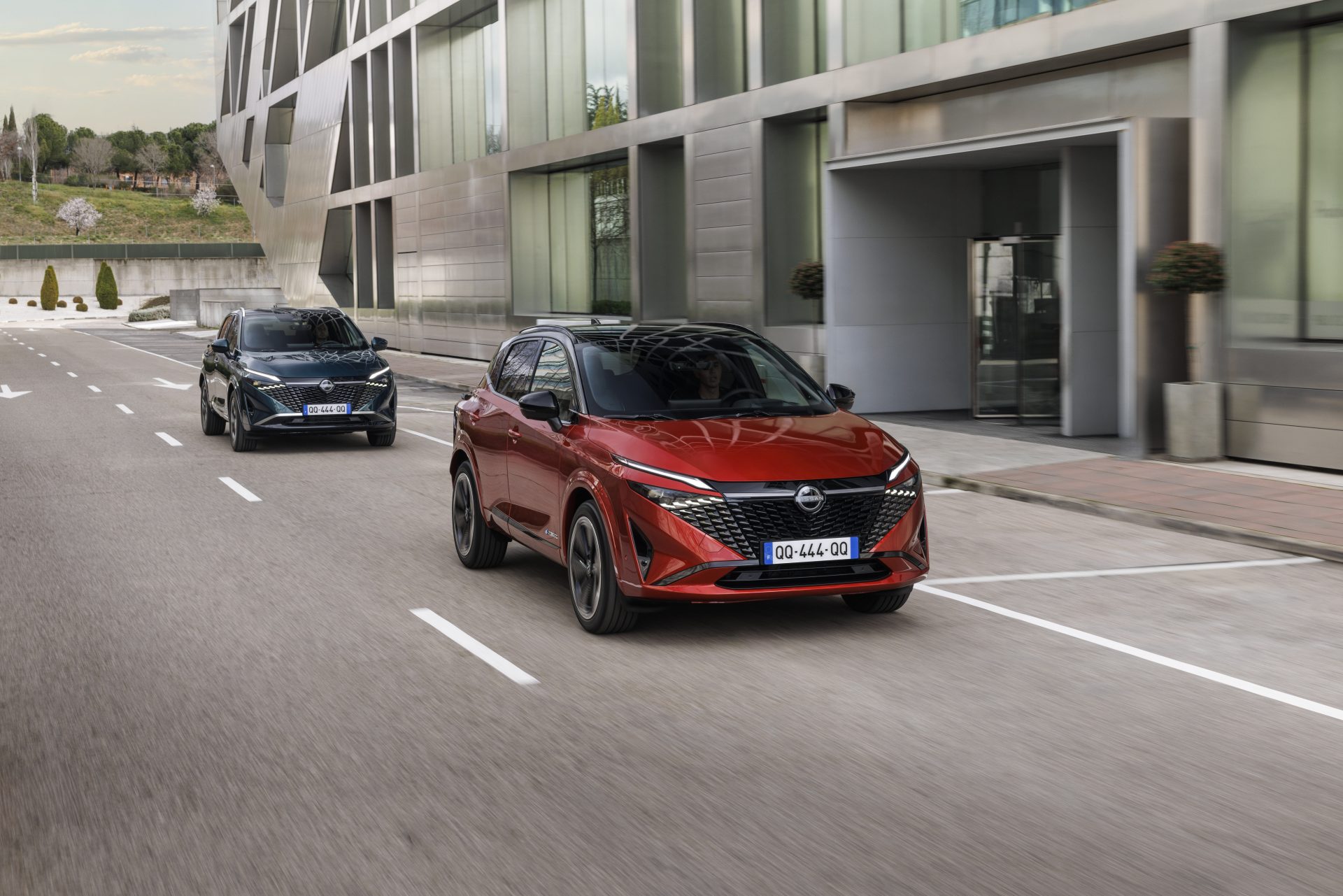
The new Qashqai is produced at Nissan's Sunderland plant, where more than 1.3 million units have been built since the first one was launched in 2007. The Qashqai is now the model with the highest number of cars built at the Sunderland plant. Last summer the plant built its eleventh millionth vehicle since production began in 1986.


